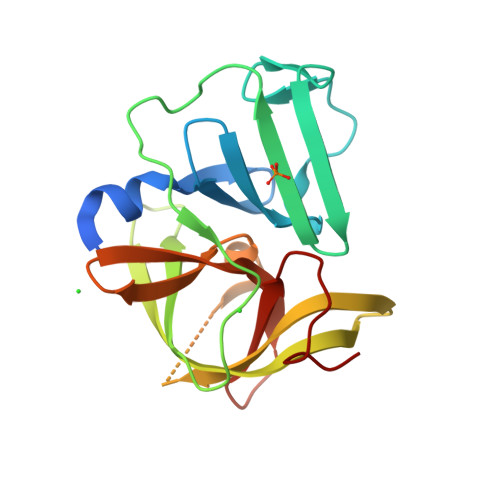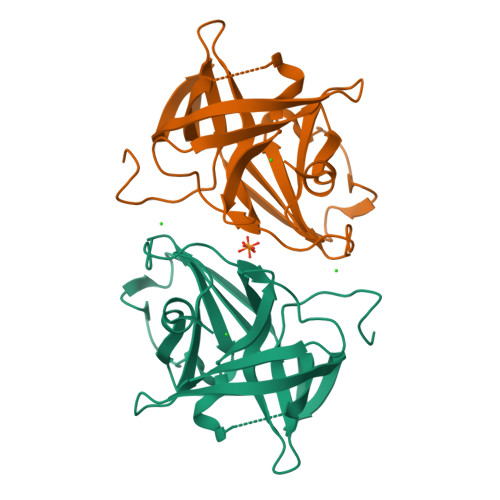X-ray crystallographic structure of the Norwalk virus protease at 1.5-A resolution.
Zeitler, C.E., Estes, M.K., Venkataram Prasad, B.V.(2006) J Virol 80: 5050-5058
- PubMed: 16641296
- DOI: https://doi.org/10.1128/JVI.80.10.5050-5058.2006
- Primary Citation of Related Structures:
2FYQ, 2FYR - PubMed Abstract:
Norwalk virus (NV), a member of the Caliciviridae family, is the major cause of acute, epidemic, viral gastroenteritis. The NV genome is a positive sense, single-stranded RNA that encodes three open reading frames (ORFs). The first ORF produces a polyprotein that is processed by the viral cysteine protease into six nonstructural proteins. We have determined the structure of the NV protease to 1.5 and 2.2 A from crystals grown in the absence or presence, respectively, of the protease inhibitor AEBSF [4-(2-aminoethyl)-benzenesulfonyl fluoride]. The protease, which crystallizes as a stable dimer, exhibits a two-domain structure similar to those of other viral cysteine proteases with a catalytic triad composed of His 30, Glu 54, and Cys 139. The native structure of the protease reveals strong hydrogen bond interactions between His 30 and Glu 54, in the favorable syn configuration, indicating a role of Glu 54 during proteolysis. Mutation of this residue to Ala abolished the protease activity, in a fluorogenic peptide substrate assay, further substantiating the role of Glu 54 during proteolysis. These observations contrast with the suggestion, from a previous study of another norovirus protease, that this residue may not have a prominent role in proteolysis (K. Nakamura, Y. Someya, T. Kumasaka, G. Ueno, M. Yamamoto, T. Sato, N. Takeda, T. Miyamura, and N. Tanaka, J. Virol. 79:13685-13693, 2005). In the structure from crystals grown in the presence of AEBSF, Glu 54 undergoes a conformational change leading to disruption of the hydrogen bond interactions with His 30. Since AEBSF was not apparent in the electron density map, it is possible that these conformational changes are due to subtle changes in pH caused by its addition during crystallization.
Organizational Affiliation:
Verna and Marrs McLean Department of Biochemistry and Molecular Biology, Baylor College of Medicine, Houston, TX 77030, USA.




















